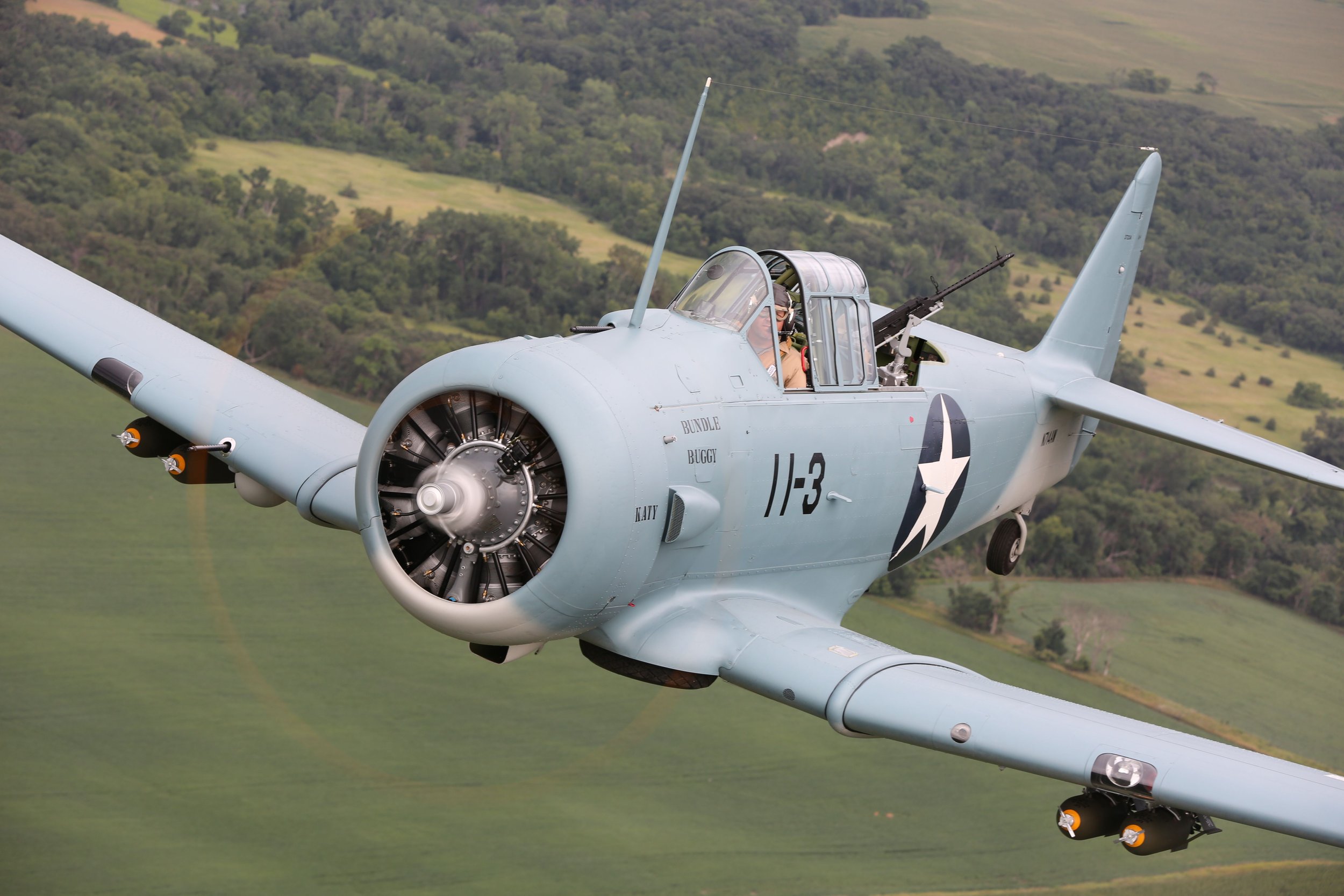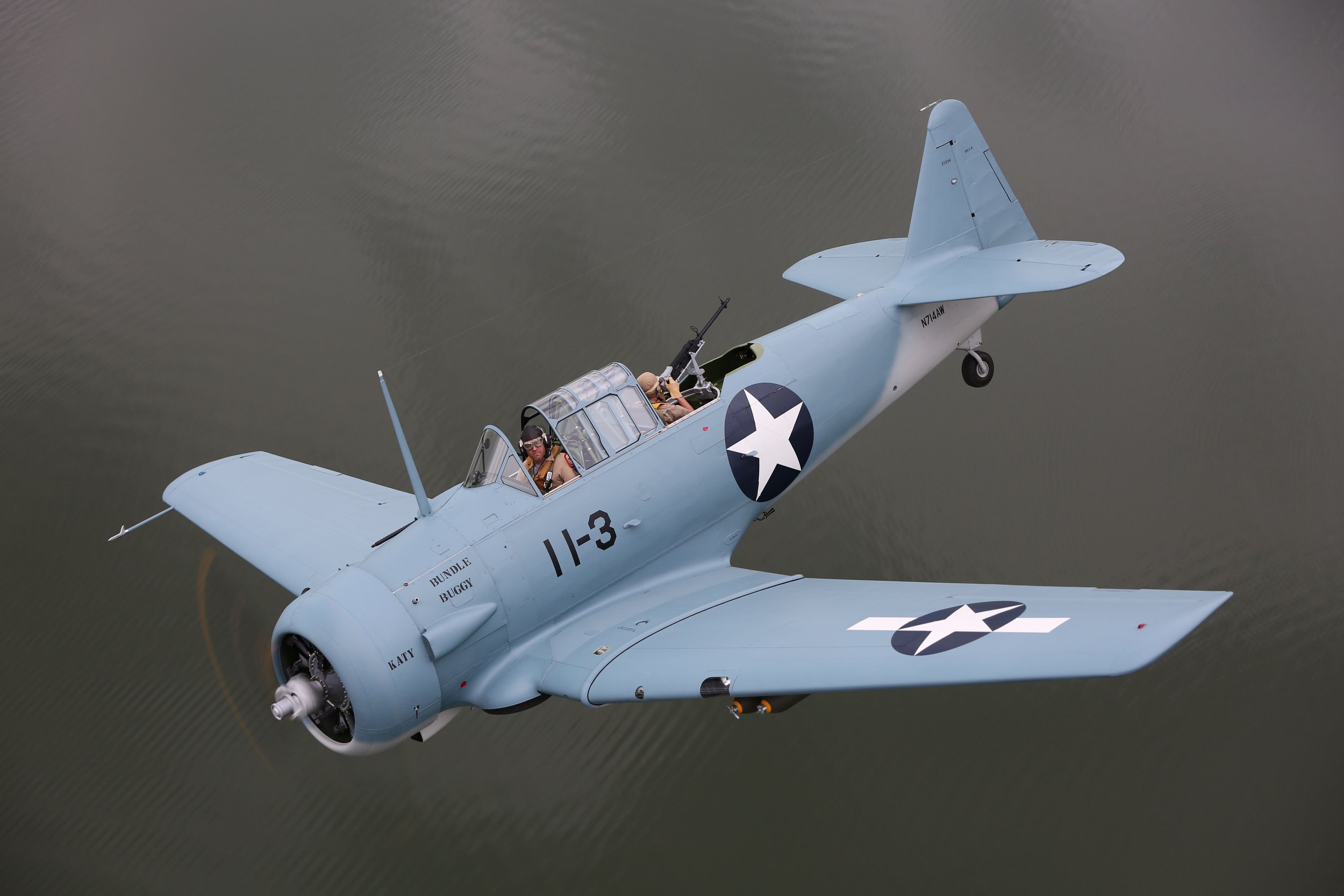North American SNJ-4
“Bundle Buggy”
The North American T-6/SNJ Texan, known as the Harvard in the Royal Air Force, is a pivotal two-place advanced trainer aircraft that has left an indelible mark on aviation history. Designed to bridge the gap between basic trainers and first-line tactical aircraft, the T-6/SNJ played a crucial role in training hundreds of thousands of pilots across 34 countries over its 25-year service life. Manufactured by North American Aviation from 1938 to 1955, a total of 15,495 T-6/SNJs were built. This aircraft is often referred to as a "pilot's airplane," as it was crafted to deliver comprehensive training across a range of military tactics. Trainees learned essential skills such as ground strafing, bombardment, and aerial dogfighting within its cockpit.
The T-6/SNJ was equipped with an array of versatile instruments, including bomb racks, blind flying instrumentation, standard and flexible guns, and various camera systems. This breadth of equipment ensured that student pilots became proficient in handling the various devices they would encounter in military aviation. The later version, the AT-6G/SNJ-5, integrated significant advancements, such as a full-time hydraulic system and a steerable tail wheel. Its design improvements allowed the AT-6G/SNJ-5 to remain in service into the 1950s, effectively functioning as an advanced trainer for the United States Air Force. The T-6/SNJ’s contributions to pilot training and its role in military aviation history make it a standout aircraft of its era.
Prior to the beginning of World War II, Marine Aircraft Group 11 (MAG-11) was composed of six tactical squadrons which were based at Marine Corps Air Station Quantico, Virginia and Marine Corps Air Station Parris Island, South Carolina. During the summer and fall of 1941 the Group engaged in maneuvers with the 1st Marine Division in the vicinity of Onslow Beach, North Carolina. They departed for the West Coast of the United States in December 1941. Upon arrival, MAG-11 became the Air-Defense Group for the San Diego, California area, based at Camp Kearny. During this interim pre-deployment period, MAG-11 served as the nucleus of four new air groups destined for combat action in the Pacific. MAG-11 embarked for the South Pacific on 15 October 1942 on the SS Lurline (Mumu). They left with no planes and were expected to fly what they found in the Pacific. Squadrons from MAG-11, such as VMSB-132 and VMF-112 landed on Guadalcanal in early November and were among the first to relive the tired original aviators of the Cactus Air Force. Arriving at Espiritu Santo in the New Hebrides Islands, the group launched offensive actions against enemy strongholds, air power, and shipping in the Solomon Islands.
During World War II, MAG-11 participated in combat action in the Solomon Islands, New Britain, Palau, Central Pacific Areas, and the Philippines. At the close of World War II, MAG-11 was based on the island of Peleliu, Palaus Group, where it remained until January 1946. It is known that MAG-11 used three SNJ's on Espritu Santo as forward spotters and general hack planes but not much info could be found. It is believed that the SNJ's were crated and shipped by sea, assembled on the island then the top side blue/grey and bottom gull grey paint was applied.





